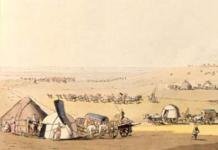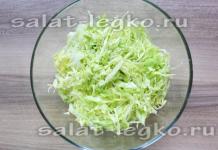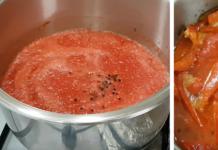In summer cottages you can find various forms of greenhouses in which both vegetable and flower plants are grown. Thanks to this, you can grow non-seasonal crops throughout the year. The success of the business will depend not only on the design of the greenhouse, but also on what material was used in its manufacture. Our goal is to tell you what types of greenhouses there are, and what material can be used in their construction, and we will also look at how the process of constructing a greenhouse on a summer cottage occurs.
Depending on the design features, greenhouses can be:
- arched;
- single-pitched;
- gable.
The first type of design is characterized by an arc-shaped roof, which allows plants growing inside the greenhouse to receive more daylight. The big advantage of this form will be the absence of snow in winter, so you will not be in danger of deformation or breakage of the structure. 
If you decide to install a greenhouse close to any country house building, then the option with a pitched roof is suitable for you. This model is very economical, since, in addition to reducing the cost of materials, you also save free space on the site. The only drawback of this design will be the accumulation of snow in winter, which will have to be cleared off to protect the structure from deformation. 
The most common option is the gable form of the greenhouse, which is very spacious for plants and people. In some cases, summer residents equip a kind of recreation area in such buildings, which allows them to combine business with pleasure. 
Types of greenhouses, their advantages and disadvantages
Today, summer residents have several options for materials that can be used to cover greenhouses and greenhouses. They differ in their structure, price and performance characteristics, so you can choose the material according to your capabilities and requirements.
The most popular material for covering greenhouses will be:
- glass;
- polycarbonate;
- film.
If you are not limited on funds, then the best option would be glass and polycarbonate greenhouses, which are distinguished by their strength and performance characteristics. Film is a budget option for greenhouses that has been used for several decades.
You can see what your greenhouse should be like in the video below:
Advantages and disadvantages of greenhouses made of various materials
To figure out which material is better for greenhouses, it is necessary to consider the advantages and disadvantages of each of them.
Glass
This material is considered the most suitable option.
Its advantages include:
- transparency, which allows you to provide the greenhouse with daylight;
- resistance to chemicals, even if they get on glass, they are easily washed off;
- when exposed to sunlight, the material does not emit harmful toxic substances;
- wind resistance.
Its disadvantages include:

Polycarbonate
Polycarbonate is a polymer plastic that is increasingly used in greenhouse coverings.
Its advantages include:
- strength;
- transparency;
- high thermal insulation rates;
- protection of plants from UV rays;
- ease of care.
Its disadvantages are:

Film
This material is distinguished by its ease of use and budget-friendly qualities, especially since the experience of using such material has been confirmed for decades.
Its advantages include:

Its disadvantages include:
- windage;
- poor resistance to frost, which is why it has to be removed after summer use;
- short service life.
DIY greenhouse construction
Summer residents are forced to build greenhouses for growing vegetable or flower crops, firstly, to get a harvest earlier than usual, secondly, to grow crops that are not suitable for a particular climate, and thirdly, to increase the amount of harvest.
Greenhouses allow you to create favorable conditions for the growth of any plant. If it is not possible to purchase a ready-made structure, then you can always build it yourself, using all your skills.
The first question you will have is where to start? So that you don’t have to rack your brains for a long time, we have drawn up an action plan for you, following which you can easily build a greenhouse on your site.
Place for a greenhouse
The first thing you need is to choose a place to locate the greenhouse. To do this correctly, pay attention to the following requirements:

Dimensions and shape of the greenhouse
The second issue you need to decide is the size of the greenhouse. To calculate everything correctly, think about how much and what you will plant in the greenhouse. If you plan to plant tall plants, then the best shape of the greenhouse will be arched or gable, the height of which will provide you with convenient care for your crops. You can calculate the dimensions yourself, or take as a basis the proposed version of a rectangular greenhouse with a gable roof. 
The base of the greenhouse can be anything, round, square, rectangular or trapezoidal, it all depends on your capabilities.
Greenhouse frame
The frame is the main part of the greenhouse, so special requirements are imposed on the choice of material. It must be strong and durable, so for its manufacture choose:
- galvanized profile;
- steel profile;
- profile made of galvanized steel, with a square section;
- wooden beams.
The choice of material also depends on your capabilities; even the most budget option - wood - can last quite a long time.
How to make a greenhouse from cellular polycarbonate can be seen in the video:
Greenhouse foundation
In addition to its direct purpose, the foundation plays the role of a pocket in which several high beds are placed. If its construction was carried out incorrectly, this can lead not only to its destruction, but also to cracking of the greenhouse coating. To avoid this, you need to listen to our advice:
It is necessary to install formwork around this trench, lay metal reinforcement bars in it and fill it all with concrete. The height of the foundation must be at least 20 cm.
If you follow these rules, you will create a strong and reliable foundation for the greenhouse, which will not be subject to ground movement.
Frame production and coating
The manufacture of the frame begins with marking the future greenhouse. You have already calculated what size your structure will be and even poured a foundation for it, now you can start assembling the main structure:

Ventilation
Inside the greenhouse, under the influence of sunlight, a greenhouse effect is created. To create an ideal microclimate for plants, greenhouses must be equipped with a ventilation system.  Ventilation can be provided by vents located on the sides of the greenhouse or doors. Ventilation helps plants planted in a greenhouse get sick less after being transplanted into open ground. But drafts must be avoided so as not to harm them.
Ventilation can be provided by vents located on the sides of the greenhouse or doors. Ventilation helps plants planted in a greenhouse get sick less after being transplanted into open ground. But drafts must be avoided so as not to harm them.
When placing such vents in the roof of the greenhouse, you can ensure the movement of warm air to the street, and open doors will ensure the passage of cool air. There will be no draft, and the air will change.
If you have a small greenhouse, then for good air exchange two vents located on the roof of the greenhouse will be enough.
To make air exchange faster, instead of roof vents it is better to equip side vents, which will be located above the ground.
Conventional ventilation cannot be used to grow tropical plants, so ventilation can be equipped with vents similar to blinds.
Greenhouse tricks
Summer residents who have been working in greenhouses for several years can tell you a lot of tricks on which the yield of vegetables or other crops depends. But everyone, without exception, will answer that growing plants depends on the crop itself, on the amount of heat supplied, on the length of daylight hours, on ventilation, on proper watering and regular fertilizing.
We will share with you some of these subtleties and tricks:

From all of the above, we can conclude that several types of material can be used to make a greenhouse, each of which has its own advantages and disadvantages. If you are planning to make a greenhouse yourself, then by adhering to our action plan, you will accomplish this without much difficulty. Remember that equipping a greenhouse with vents is just as necessary as watering the plants.
Greenhouses made from Hungarian film are a good choice for those gardeners who prefer a simple design with minimal costs. All that is required is a frame, film and auxiliary materials. Read on to learn how to build a film greenhouse with your own hands.
Greenhouses under film have been used quite widely by domestic gardeners since the last century. This design has many advantages, among which the following points are worth highlighting:
- you won’t need to spend a lot on building a greenhouse; it is one of the cheapest greenhouses used in modern gardening;
- the film with which the frame will be covered is characterized by good resistance to moisture, it will not let water into the structure;
- this film material stretches very well and even in this position can withstand significant loads;
- Carbon dioxide and oxygen easily pass through the film. As for ultraviolet rays, they are not absorbed by this material. Another important advantage is that the sun's rays, passing through such a film, are scattered, which has a beneficial effect on the growth of vegetables and other crops;
- the use of such industrial material is absolutely safe for both plants and humans. The film is non-toxic, it does not absorb foreign odors, and fungus does not form on it.
Arched greenhouses under film have gained wide popularity among domestic gardeners. However, even material with such worthy reviews also has weaknesses. For example, due to low atmospheric conditions, the film wears out quickly, and the structure itself becomes fragile. Another significant drawback of the film lies in the fact that it is highly electrified, and therefore attracts dust. That is, it is recommended to wash the material regularly so that light reaches the plants. In addition, sooner or later the film coating becomes cloudy.

A greenhouse made of film is a financially beneficial solution. However, before buying a material, take into account not only its advantages, but also its disadvantages.
Design Features
In order to cope with the implementation of your own project to create a film greenhouse, no special effort or knowledge is required. The main thing is to decide in advance on the material that you will use for the frame, as well as the type of coating itself. The technology itself remains virtually unchanged. Another point that you should pay attention to is the location of the greenhouse. It is recommended to build a greenhouse on a small hill. Do not forget that the structure should be in the open sun and not in the shade.
How to choose a film
Greenhouses with thick film are increasingly being installed by domestic gardeners. This covering material has several main types, which are best used for cladding the frame. It’s worth noting right away that cling film is not suitable for a greenhouse because it cannot withstand strong pressure and tension.

Very often, gardeners prefer hydrophilic stabilized film. What makes it beneficial is the absence of condensation during operation. Another popular type of film cover is light-stabilized. Use this material, and your plants will be reliably protected from ultraviolet rays.
To purchase high-quality covering material for your greenhouse, pay attention to the key recommendations for its selection. For example, the density should be medium. This way, your greenery will not suffer from lack of lighting, but the lining will not be torn.
Step-by-step instruction
Hungarian-type film greenhouses are becoming increasingly popular among domestic gardeners. Knowing how to choose quality materials for building a greenhouse, you will be satisfied with the result. But it is the technology of building a greenhouse structure that is of great importance. You need to implement your plan step by step and taking into account the basic recommendations from experts.

Preparation
First of all, any gardener needs to decide on the type of structure and materials that should be purchased in advance. When all that remains is to prepare the area chosen for the construction of the frame, be sure to clear it of debris, then make sure that the earthen surface is flat, without any depressions.
Remember: the area should not be skewed. Otherwise, you will not be able to make the greenhouse structure stable.
Frame assembly
The frame of the arched greenhouse under the film is assembled at the initial stage. The first thing you will need to do is assemble the box. If you use wood, be sure to treat it with antiseptics. Metal rods and reinforcement are driven into the ground. The pipes that are placed on top must be carefully fixed. Then install supports located diagonally.
Film fastening and welding
When the wooden or metal frame is ready for use, it’s time to cover it with film. Often, film strips have to be fastened together, and this point is not always given due attention. Meanwhile, it is in the fastening area that the film breaks most often. The reason may be either stretching during heating or simple friction. To prevent this, you need to fix the film with great care.
The effectiveness of a greenhouse is determined by the cost of construction, ease of operation and high returns. Those who have seen enough of ready-made structures made of metal and polycarbonate and were impressed by their cost cannot believe that the same ones can be built independently from scrap materials. There are many available technologies for building a greenhouse with your own hands - what to choose, what material to use and what design to make more profitable and easier. Study the theory, watch photos and videos to choose the best option.
Home greenhouse
What can you use to make an inexpensive greenhouse?
To create an inexpensive and functional greenhouse, remnants of various building materials, both new and used, are excellent. For example, the frame can be built from window frames left over after installing metal-plastic windows, a metal profile of a suitable cross-section, or plastic water pipes. What about the coating? To replace expensive glass and polycarbonate, it is worth using alternative materials.

Greenhouse structure made from window frames
Frame materials
To decide on the suitability of a particular type of recyclable material, analyze its properties from the point of view of new operating conditions:
- strength, evenness and stability;
- environmental safety for humans and the environment;
- maintainability and flexibility to machining;
- ability to tolerate high humidity and temperature changes.

Arched frame made of wood
Most likely, it is not possible to find a material that is ideal in all respects, but with some allowance for installing the greenhouse frame with your own hands, you can use:
- lumber - round timber, timber, boards, sleepers;
- metal profiles - round or open section with sufficient (from 1.5 mm) sheet thickness;
- water pipes - made of polyvinyl chloride, polypropylene, low-density polyethylene, ordinary or reinforced with metal mesh;
- cabinet products to be recycled - wooden containers, construction pallets, wooden or plastic barrels, old refrigerator, window frames.

Mini greenhouse in the refrigerator
Each option has its pros and cons, and they must be taken into account at the beginning of the design:
- wood is environmentally friendly and affordable for most summer residents, but before and after installation it must be thoroughly treated with an antiseptic. But even in this case, the service life of a wooden frame does not exceed 5–7 years;
- provided that the cross-section is correctly selected and the loads corresponding to it, the metal frame lasts a long time, but is susceptible to corrosion. It must be regularly coated with an anti-corrosion compound;
- It is easy and quick to build a tunnel greenhouse from plastic pipes. However, its rigidity and wind resistance are low, so such a structure must be installed in a quiet place and covered only with film.

Creative approach to construction
The use of non-traditional materials and even household items in the design contributes to the discovery of new ways to economically arrange amateur greenhouses. Of course, their service life is short, but in the absence of any costs, nothing prevents you from repeating the experiment at the right time.
Greenhouse covering material
From the inexpensive offers on the market, summer residents traditionally choose film or one of the varieties of non-woven covering material - “Spunbond”, “Lutrasil”, “Agrospan” or another. As for the very popular polycarbonate, if it is not possible to purchase high-quality sheet plastic, do not splurge on a cheap one. Due to almost zero protection from solar radiation, it crumbles literally in the first season of use.

Reinforced film
Someone will argue that the film is unprofitable, since it needs to be removed and changed with your own hands every season. Indeed, this drawback is inherent in conventional polyethylene film, but today there are more durable types of film coatings:
- light-stabilized – they contain additives that protect against ultraviolet radiation, which increases their service life to 36 months;
- reinforced - have special mechanical strength due to a 2- or 3-layer structure with a reinforcing mesh made of strong polyethylene threads;
- air-bubble - also consist of several layers of polyethylene, which gives them additional strength, and specific air-filled bubbles help retain heat inside the greenhouse;
- hydrophilic - prevent the accumulation of large drops of condensation on the inner surface and prevent them from falling on the plants.

Two in one: shelter and insulation
When purchasing film, pay attention to its markings - look for transparent light-stabilized (ST) material, preferably with infrared protection (IIR).
Non-woven fabrics last longer than film fabrics, are well ventilated and have better heat-insulating properties, but are of little use for covering stationary greenhouses. Varieties with a density sufficient for a full cycle of growing crops almost do not transmit light, while thinner and more transparent ones are not very durable. Save this option for additional covering of the film greenhouse during the frost period.
Types of greenhouses for summer cottages
If you are planning to build a greenhouse with your own hands from inexpensive components, plan in advance which design best meets the requirements:
- Arched - due to the minimum number of joints between parts of the frame and the ability to cover it with a solid canvas, it is considered an ideal solution for early cultivation of vegetable crops by novice summer residents.
- Gable - a sufficient angle of inclination of the roof and ease of installation of ventilation vents allow the greenhouse-house to be used throughout the year.
- Single-pitch - simple installation and rational use of usable space are best suited for owners of small plots or those who want to install a wall-mounted greenhouse.
- Mittlider greenhouse - a special roof design allows you to effectively retain heat and provide comfortable ventilation for the plants in the internal space.
- Greenhouse-thermos - its principle of operation is to preserve thermal energy due to its insulation, full or partial deepening and a double or even triple layer of coating. When properly organized, tropical vegetables and fruits can be grown in such thermoses all year round with minimal heating costs.
There are many other types of greenhouse structures - the so-called “droplet”, Fedorov greenhouses, semi-arches, and so on. But not all of them can be built with your own hands, using available materials and without having construction skills. So, take on a greenhouse made of plastic pipes if an arched seasonal structure that requires dismantling in the winter suits you.
To build a large enough single- or double-slope greenhouse from window frames, your own supplies will be small - take a closer look at which neighbors are replacing windows, or negotiate with construction companies about the removal of dismantled frames. Also, keep in mind that to successfully build a greenhouse from a profile with your own hands, you will need drawings - without them it is difficult to maintain the given dimensions and accurately determine the amount of materials.
Construction highlights
After studying photos of various greenhouses and standard designs or developing your own drawings, proceed to active action. It is important to take a responsible approach to choosing a site for a greenhouse, select a set of the necessary tools and consumables, and decide on the type and depth of the foundation.

Layout example
Choosing a location for a greenhouse
You should not place a greenhouse where it seems convenient. Assess the site from a grower's point of view:
- where is its southern zone and where is its northern zone;
- which of the free sites is located on the leeward side;
- are there tall trees or buildings nearby that shade the space;
- whether the new building will cast a shadow on the neighbor’s yard;
- How fertile is the soil in the area, does it require cultivation;
- where will you get water for irrigation, and is its source located too far away?

South side of the future greenhouse
To ensure that the greenhouse receives enough warmth and light in early spring and late autumn, select a location on the south side of the plot, if possible protected from drafts, away from the red line and high objects. If you do not rule out that you will expand your greenhouse in the future, provide in advance a place to expand the structure.
It is difficult to find a site that ideally meets all these requirements. But in most cases, you can smooth out some of the shortcomings - clear the area of old trees, enrich the soil with fertilizers, install wind protection, organize drip irrigation. However, there are places where a greenhouse cannot be installed:
- on the northern slope of the site - the structure will be cold, and the lower parts of the frame will experience an unforeseen increased load;
- near (less than 0.5–0.8 m) fences and tall plants - such a proximity threatens the formation of an air funnel and the accumulation of snow in winter, which will lead to excessive heat loss;
- next to another winter greenhouse - the snowdrift formed between them can squeeze out the adjacent wall of the structure.

Drainage of a greenhouse structure
It is unacceptable for rain or melt water to flow into the greenhouse, so do not place it in a low area. As a last resort, organize your own drainage system from drainage ditches, and possibly earthen ramparts along the perimeter of the building.
Required tools and materials
The speed and quality of construction of any object, be it a residential building or a greenhouse, largely depend on the timely and competent selection of all the necessary tools and building materials. If simple frames made of timber and film can be erected with only a hammer, a hacksaw and nails, then for a welded structure made of metal profiles and polycarbonate you will need a whole arsenal of tools:
- measuring tape, building level, pegs, twine, square, black marker - for marking;
- grinder, cutting wheels, welding machine, electrodes, wood saw, extension cord - for the frame;
- drill, drill, bit, cutting knife - for roofing.
The list of materials is no less impressive:
- concrete and reinforcement, brick or slate - for the foundation;
- square pipe 20x20x2 and a corner of the same size, edged board 25x200, door hinges, metal paint, antiseptic for the frame;
- polycarbonate, roofing screws - for roofing.
Calculate the quantity based on the desired dimensions and shape of the greenhouse, as well as the standard sizes of building materials. So, to build a gable greenhouse with your own hands measuring 3x6x1.7 m (see its drawing below), stock up on:
- at least 125 m of square pipe and 48 m of angle;
- six boards 6 m long (for organizing beds);
- 3 kg of paint for metal;
- five polycarbonate sheets 6x2.1 m;
- self-tapping screws 2.5 cm and 4 cm long - 100 and 40 pcs. respectively.

Drawing of a gable greenhouse measuring 3x6x1.7
To save money, you can cover the frame with film or spunbond, using polycarbonate only on the roof.
Foundation arrangement
For small-sized greenhouses, in most cases, a foundation is not needed, but for full-size greenhouses it performs a number of useful functions:
- ensures the stability of the frame and the integrity of the coating;
- protects against penetration of rodents and weeds;
- improves the internal microclimate provided it is insulated with insulating boards.
As you can see, you shouldn’t refuse to build a foundation even for the sake of saving money - this will certainly affect the durability of the entire structure. It’s another matter if you are building a greenhouse with your own hands for one or two seasons or planning to move it to another place. In this case, it is quite possible to get by with arranging a light base from the following materials:
- bricks or foam concrete blocks;
- wooden beam 100x100 mm;
- metal pipes (for columnar foundations).

Brick laying scheme
Quite reliable bases can be obtained from old railway sleepers or failed brake discs (they can be easily purchased or even asked at a local car repair shop).
The shallow shallow foundation is famous for its good quality, but its construction is expensive. To build a strip foundation for a greenhouse with your own hands, follow the algorithm:
- Clean the area and make markings according to the dimensions of the greenhouse.
- Dig a trench 30–40 cm deep and wider than the width of the foundation by the size of the formwork.
- Level the bottom of the trench and fill it with a sand cushion 8–10 cm thick.
- Moisten the sand, compact it and install formwork on top of it, the above-ground height of which is equal to the height of the future base.
- Place a belt tied from reinforcement into the formwork.
- Prepare a dry mixture of cement, sand and crushed stone in a ratio of 1:2:4 and fill it with water to form a creamy solution.
- Pour it into the formwork, periodically bayoneting it with a shovel or a piece of reinforcement to ensure uniformity.

Shallow concrete base
After a week or a week and a half, you can remove the formwork, but you should not mount the frame on it yet - wait at least 28 days until the concrete gains strength.
Greenhouse assembly
Before building a greenhouse with your own hands according to the above drawing, cut the profile into a certain number of parts:
- 300 cm – 2 pcs.,
- 298 cm – 6 pcs.,
- 294 cm – 8 pcs.,
- 170 cm – 18 pcs.,
- 170 cm with cut corner – 14 pcs.,
- 160 cm – 4 pcs.,
- 90 cm – 4 pcs.,
- 92 cm – 1 pc.,
- 20 cm – 14 pcs.,
- 40 cm – 16 pcs.,
- 130 cm – 3 pcs.,
- corner 100 cm – 44 pcs.,
- 130 cm – 4 pcs.
Use thin circles for cutting, and one thick one for deburring. After this, proceed to welding work:
- Weld the front end and side walls.
- Weld the intermediate support.
- Check the diagonals, set the level and install the skate.
- Attach the rear end and intermediate roof strips, including the transom.
- Refine the diagonals and weld the braces at the corners and under the ridge.

Welding a greenhouse from a profile
Clean the finished frame from carbon deposits in the welding areas and paint it with a light-colored enamel primer. At the same stage, you can install beds from edged boards.
- In the places where the sheets are attached, mark the drilling points with chalk and use a drill to make 4 mm holes.
- Cut the polycarbonate sheets into sheets for the ends, roofing and walls.
- Make a skate by simply folding a long strip 20–30 cm wide in half.
- Attach the plastic blanks to the frame - first the end ones, then the sides, the roof and the ridge.

Polycarbonate fastening
To avoid crushing the polycarbonate honeycombs, supplement the self-tapping screws with special thermal washers with a rubber seal. For the same purpose, you should not overtighten the hardware when drilling. For the convenience of working on the roof, use a device in the form of a board with slats packed across it. Be careful - falling, even from a small height, can cause injury and damage to the polycarbonate.

Types of washers for fastening polycarbonate
An example of an arched structure assembly
If you need not a stationary greenhouse, but a small tunnel greenhouse, the fastest way is to order it on the manufacturer’s website, and it’s cheaper to make it yourself from plastic pipes. Metal pipes can also be used, but to bend them properly, you will need a pipe bender. To increase the rigidity of the structure, it is recommended to fill the pipe cavities with sand and install them on the ends of reinforcing pins driven 20–30 cm into the ground.
Summer residents often complain that such mini-greenhouses fly away at the slightest wind. To make them more stable, build a plank base that can also serve as the sides of the bed:
- From one-inch boards, knock down a rectangular box according to the size of the future greenhouse.
- Cut the pipes into pieces so that after bending they form an arch of the desired height.
- In 1 m increments, install the finished arches into the box, attaching them from the outside with metal clamps and self-tapping screws.
- Cover the resulting tunnel with film or spunbond (such a frame will not withstand polycarbonate or glass).
- Secure the covering material - at the bottom with an earthen embankment, on the arches with special or homemade clips, or with elastic twine.

Arched structure made of polypropylene pipes
When it gets hot, organize ventilation by lifting the covering sheet on one side, and if necessary, shade the plants with gauze or thin spunbond.
Attached greenhouse and thermos greenhouse
The warmest, even in winter, are greenhouse extensions and thermos greenhouses. Their construction cannot be classified as budget projects, since they are made of polycarbonate and metal, must stand on a solid foundation or be buried several meters deep into the ground.
An attached greenhouse stores heat better by being adjacent to the southern wall of a permanent building - a bathhouse, a garage, a residential building. In an unheated extension, the temperature in winter does not drop below 2–4 °C, which is enough for early forcing of tulips, production of vegetable and flower seedlings, and preservation of outdoor plants from severe frosts. The advantages of a greenhouse extension are obvious, but there are several nuances in its arrangement:
- the wall adjacent to the heated room must be insulated;
- the completed foundation cannot be rigidly connected to the foundation of the main building;
- it is undesirable to rigidly nail the support frame to which the greenhouse frame is attached to the house;
- It is important to ensure that snow or ice does not fall from the roof of the house onto the extension.

Underground greenhouse-thermos
The geometric shape of attached greenhouses can be different - single or gable, arched, with straight or sloping walls.
The key feature of thermos greenhouses is their underground location - only part of the walls with a translucent roof are above ground level. Deepening allows you to maintain a microclimate like in a cellar, when the temperature is above zero even in frosts of tens of degrees.
The algorithm for constructing buried structures with your own hands looks like this:
- Digging a pit 1.5–2 m deep and laying the foundation.
- Construction of walls from moisture- and frost-resistant materials, for example, thermoblocks.
- Installation of a metal frame for the roof and covering it with cellular polycarbonate.
- Carrying out internal work on the installation of heating, lighting, ventilation systems.

Greenhouse extension as part of an architectural ensemble
Thermos greenhouses built in this way are effectively used for growing melons and exotic plants even in the middle climate zone.
Video: DIY budget greenhouse
Many ways to organize greenhouse farming at a summer cottage have been developed, and among them there are budget solutions. The appearance of inexpensive modern building materials in stores and a lot of practical advice contribute to the growth of public interest in this type of activity. More and more people, starting with small homemade greenhouses and moving on to a full-fledged greenhouse business, are finding a profitable business to their liking.
Video 1: Budget greenhouse of simple design
Video 2: Installation of a timber foundation
Video 3: Welding frame elements
Video 4: Covering the greenhouse with polycarbonate
Invest a little time in studying projects and a little more effort in implementing the one that seems most suitable, and you will get a successfully operating mini-factory of fresh vegetables. The main thing is not to neglect the nuances and absorb as much information as possible, which is actively shared by experienced vegetable growers.
In conditions of unfavorable climate and a relatively short summer season, a greenhouse becomes an indispensable assistant for a gardener. With its help, you can expand the boundaries of the growing season and get an earlier and more abundant harvest. And with some effort and resources, the gardener will have the opportunity to grow crops all year round, regardless of the weather and outside temperature. Do-it-yourself greenhouse - what shape and what to build it from?


The creation of any structure, be it a large house or a small greenhouse, begins with planning. The first step in this matter is choosing the design of the future building. There are many types of greenhouses, differing in their shape, complexity and cost of creation. What are they?
Table. Types of greenhouses that you can make yourself
| Title, photo | Description |
|---|---|
| A greenhouse, the cross-section of which has the shape of a semicircle or arch. |
| The shape is similar to an arch, but more elongated and “pointed”. |
| Classic version with a gable roof. |
| It differs from a classic greenhouse in that the walls have a certain angle of inclination. |
| A subtype of the classic one - the walls are vertical, and the roof has only one slope. |
| It has no side walls, the roof starts almost from the ground level. |
| It differs in that the roof slopes have different heights and slopes |
| Most of the greenhouse is located underground - only the roof is above ground level. |
| To save heat, the northern and side walls are made of solid construction and insulated. |
| The building is in the form of a round dome, assembled from triangular cladding elements. |
| Greenhouse in the form of a tetrahedral pyramid. |

Now let's move on to a more detailed description.
Arched greenhouse in cross-section it has a semicircular or close to it shape. It is assembled from a set of arcs connected to each other by horizontal frame elements. One of the most common forms of greenhouses in the CIS. To make a frame of sufficient volume, not much material is required, which reduces the cost of the design. Its low cost does not in any way affect its strength - a well-built arched greenhouse stands out due to its high resistance to snow and wind loads. And thanks to the arc-shaped shape, the sun's rays, regardless of the time of day, fall perpendicular to the cladding of the structure, as a result of less energy loss through reflection and refraction, the plants inside receive more light. The disadvantage of this design is that it is not so easy to make from metal or wood at home.

Important! There is one more drawback of arc-shaped greenhouses, but it is very subjective - not everyone likes the appearance of such buildings. Therefore, if you want to get a structure for growing plants that will also please your eyes, pay attention to other types of structures.
It is a development of buildings of the previous type. It has a rounded but more elongated shape, reminiscent of the end of an arrow. Compared to arched greenhouses, such a building has an even higher resistance to snow loads - snow does not linger on an overly steep roof. But finding ready-made drawings and making a lancet-shaped frame is even more difficult than an arched one.

By the way! In English-language sources and materials devoted to gardening, such greenhouses are known as gothic arch (or translated as “Gothic arch”).
Also known as classic or . Previously, a couple of decades ago, it was the most common design. It features acceptable illumination levels and large volumes. In addition, it is much easier to build - the frame of a classic greenhouse consists of straight metal or wooden elements. But the downside of such a design is the high consumption of material, which is reflected in the cost of the structure. In addition, the “house” requires supports and jibs that will protect the roof from being crushed by snow masses.

Also sometimes called "Dutch". It differs from the previous design in that its side walls are not located vertically, but at a certain angle. Due to this, more sunlight penetrates inside the plants. Requires a strong frame and a good ventilation system.

Lean greenhouse outwardly it looks like a “half” of a house, where only one slope remains of the roof. This option is most often built as a small extension to a house, barn or fence. Used for early cultivation of seedlings for planting in open ground.

Are you planning to switch to cultivating plants indoors, but do not have enough experience in this matter? Are you planning to grow seedlings? Ask yourself these questions, and if the answer to at least one of them is “yes,” then it’s time for you to think about it.
Placed in the right place, it receives maximum solar energy, so the presence of windows is mandatory here, otherwise in hot weather the plants will simply overheat. It is relatively simple to build, but the useful internal volume leaves much to be desired. Often part of the building is located below ground level.

Created by the horticultural expert of the same name and Doctor of Agricultural Sciences. It differs from a classic or arched building in that the slopes or halves of the roof have different heights. A vertical wall is formed between them, where a series of vents are mounted. As a result, the greenhouse achieves the most effective ventilation and air circulation, which has a positive effect on plant productivity.

It differs from a regular greenhouse in that the level of the slopes differs - one of them, facing the north side, is higher, and the southern one, on the contrary, is lower. In the middle, at the junction of the slopes, there is a vertical wall with transoms along the entire length of the greenhouse.
It is created with the expectation of maximum accumulation of solar energy and maintaining the optimal temperature for crop growth even during the most severe winter cold. To do this, the building is immersed in the ground up to the roof, which acts as a kind of heat insulator. The main problem of such a greenhouse is the enormous labor costs during construction due to the need to dig an impressive pit. In addition, the structure needs good protection from groundwater.


This is another example of the implementation of the idea of saving heat in a building. To do this, the northern side of the building is made of solid brick, timber or other material and is insulated from the outside. Inside the greenhouse, in addition to plants, there are bags of gravel and other objects that accumulate heat during the day and then release it in the evening and at night. As a result, the gardener receives a building in which he can grow vegetables even in winter and with minimal heating costs. Further, in one of the sections of the article, special attention will be paid to a greenhouse with solid walls and a solar battery.

Exotic and rather rare types of do-it-yourself greenhouses are buildings in the form of and. The cost of their construction is many times higher than structures of classical forms, but at the same time they have an unusual appearance and outstanding qualities in terms of accumulating solar heat and providing a microclimate inside.

In addition to the shape, greenhouses differ in the period of operation and are divided into two types.
- Seasonal– the simplest structures without any heating systems. Used from spring to autumn, they allow you to “push” the boundaries of the summer season.
- or winter - built and equipped to work in the cold season, capable of providing optimal conditions for the growth and maturation of agricultural crops even in sub-zero temperatures outside.

Now let’s move on from the structures and forms of buildings to the materials from which they are created. First, let's look at the frame - the basis of any greenhouse.
Frame materials
There are three main groups of materials from which the greenhouse frame is made:
- wood;
- metal;
- polyvinyl chloride
The most commonly used wood is rectangular and square timber. Despite its average cost, it is highly technologically advanced - working with such material using ordinary household tools is very simple. With proper assembly and use of supports, struts and jibs, the frame made of timber is very strong and reliable.

Wooden square beam

Important! The main enemies of wood are mold and rot. This problem is solved by two measures. The first is the choice of high-quality larch timber, a type of wood that is most resistant to rotting. The second is the treatment of frame blanks with 2-3 layers of antiseptic impregnation.
When choosing timber for the greenhouse frame, be sure to pay attention to the following things.
- Humidity – the wood must be properly dried, otherwise the greenhouse frame will shrink seriously after construction.
- The presence of a large number of knots is undesirable.
- Wood fibers should not have serious defects.
- Individual pockets of mold are not allowed.
- The timber for the greenhouse frame must match in size and straightness.
Due to the characteristics of the material and the fact that creating bent parts from wood with your own hands is a complex and labor-intensive process with a high percentage of defects, timber is rarely used when creating arched or lancet greenhouses. At the same time, it is excellent for buildings of classical shape.
The next material for the greenhouse frame is metal. It is represented by many types of steel and aluminum profiles. The most popular is a profiled pipe with a cross-section of 20x20 mm or more. With a relatively low weight and low cost, it is highly durable. In addition, if there is a high-quality zinc coating or powder coating, the profiled pipe is durable and resistant to corrosion. Fastening of frame elements made of this material is done using self-tapping screws, welding, nuts and bolts and special crab-type connectors.


Important! The production of bent frame parts for an arched greenhouse from a profiled pipe is possible using a homemade machine, which is not difficult to assemble.

In addition, among metal products, corner profile, plasterboard ceiling profile and W-shaped roofing profile are very popular. They are even lighter and more convenient to process, but the downside of this advantage is less strength and low resistance of the finished structure to snow loads.


And the last group of materials for the manufacture of greenhouse frames is polyvinyl chloride pipes and profiles. They are quite flexible and cheap, easy to use, store and transport. The polyvinyl chloride frame is suitable for a light summer greenhouse of a small area.

Sheathing for a greenhouse built by yourself
From above, the frame of the greenhouse is covered with transparent material, allowing a significant portion of sunlight to pass through.
The following is used as cladding:
- glass;
- film;
Several decades ago, glass was the main material used in the construction of greenhouses, greenhouses and conservatories. It has high light transmittance and does not react with chemical compounds. Also, glass is not subject to any corrosive effects and is characterized by high durability - a frame made of wood or metal will quickly become unusable. But the latter benefit is debatable - the material is also known to be brittle, and any stone or thick branch can turn durable glass into a pile of sharp shards. Therefore, in recent decades it has been replaced by transparent polymers.

One of the representatives of such materials is polyethylene film. If you were looking for something very cheap to cover the frame for one season, film is your choice. But keep in mind that the material is short-lived and fragile.
Important! There are certain types of polyethylene film with reinforcement. It gives the material strength, increases its service life and resistance to wind.


The third material for greenhouse cladding is cellular polycarbonate. This is a relatively inexpensive material with high impact strength - in a situation where the glass breaks, the polycarbonate will only wrinkle or receive several small cracks. In addition, it is lightweight and very flexible, making it ideal for greenhouses with rounded frame elements. The presence of honeycombs filled with air gives polycarbonate the best thermal insulation among all cladding materials.


As for the disadvantages, they are as follows:
- gradual destruction of material under the sun;
- the need to take into account during installation the significant expansion of polycarbonate when heated;
- Without protection of the ends, the polycarbonate cells will quickly fill with dirt, condensation and mold, the material will bloom and become unusable.
To create a greenhouse with your own hands, it is important to choose the right high-quality polycarbonate. An important criterion in the selection should be the manufacturer. There is no need to chase cheap prices and buy Chinese materials. A proven high-quality polycarbonate manufacturer on the domestic market is the Kinplast company. Its product range offers several brands of cellular polycarbonate: WOGGEL - a premium material created in collaboration with European colleagues; SKYGLASS – represents ideal price-quality ratio; AgroTITANIUM and polycarbonate SPECIAL FOR GREENHOUSES - designed for creating greenhouses and hothouses, helps create an optimal microclimate for plants, and has an affordable price.
Video - Making a greenhouse with your own hands from A to Z
Do-it-yourself greenhouse with a permanent wall and heat accumulation
Winter greenhouses with the ability to grow seedlings, vegetables and berries even in cold weather have been known to gardeners for a very long time. But they have one significant drawback - high heating costs. How to solve this problem? Firstly, it is necessary to limit the loss of such valuable heat. For this purpose, in the greenhouse presented below, the northern half is allocated as a utility room, and between it and the beds there is a solid wall covered with mineral wool. In addition, the building is equipped with a heat accumulator.

This battery is a network of fairly thick pipes laid underground and with outlets to the outside. During the day, sunlight warms the soil in the greenhouse, which does the same to the air in the pipes. At night, the temperature in the greenhouse drops. Warm air, obeying the laws of physics, rushes upward, cold air - down into the pipes. There it warms up from the soil, the cycle repeats, the circulation of air masses begins, the temperature in the greenhouse remains within limits suitable for seedlings and plants.

Let's look at the construction of such a structure in the form of step-by-step instructions.
Step 1. A site is selected, measurements and delineations are made. A pit with a depth of 30 to 70 cm is dug, its walls and bottom are leveled. To speed up the process when building a large greenhouse, it is advisable to use special equipment.

Step 2. Formwork for the strip foundation is constructed along the edges of the pit.

Step 3. Concrete is poured inside the formwork and a strip foundation is created.


If necessary, foundation slabs are poured in the center and supports for columns are installed (here - sections of metal pipes, concrete is also poured inside) supporting the roof of the building
Step 4. The bottom of the pit inside the perimeter is covered with thermal insulation.

Step 5. Horizontal pipelines are laid on top of the thermal insulation to ensure air circulation.


Step 6. The ends of the air ducts are arranged, everything inside the foundation is covered with earth.

Step 7 The frame of the northern and side walls of the greenhouse is being constructed. Instead of wood, you can use brick or concrete blocks.

Construction of a wooden frame, the foundation is pre-covered with waterproofing
Every gardener is attracted by beds with vegetables and other types of plants. And, probably, each of them dreams of greenhouses. In this article we will look at various options for greenhouses and study the materials from which the greenhouse is made. Let’s raise the question of whether it’s better to build it yourself or buy a ready-made kit. So, how to make a greenhouse with your own hands? Let's start looking.
Materials such as polycarbonate, glass, and polyethylene film are used to cover structures for growing plants.
The frame of the greenhouse is mainly made of metal profiles or wood, and polymer pipes can also be used.
Depending on the type of construction, greenhouse structures are of the following types: arched, gable and single-pitch. A greenhouse is most often installed as a free-standing structure, but an extension to an adjacent building can be made.
Greenhouses are divided into winter and summer. In most cases, a winter greenhouse is a greenhouse.
In order to grow seedlings for flowers or early vegetables, summer residents use a frame made of metal profiles, wood or metal-plastic pipes to build greenhouses. And depending on thickness preferences, cover with plastic film. To preserve the film for more than one season, it is recommended to remove it in the summer. The film does not need to be removed if it is made of reinforced film.
If an all-season greenhouse is installed at the dacha, then it must also be additionally equipped with systems such as microclimate control sensors, a heating system, irrigation, and ventilation must also be installed.
DIY arched summer greenhouse
Let's look at how this type of greenhouse is built. In order for this structure to be manufactured quickly and efficiently, it is necessary to prepare the material for it in advance. It is recommended to use a U-shaped metal profile. To do this, you first mark the shelves on the frame, and then bend them at your discretion. After that, you will need cling film, leftover corners, thick reinforcement, and an edged board.
To build a support for attaching a greenhouse or greenhouse, scraps from metal pipes are used. To do this, first mark the place where the building will be installed. After this, the pipe sections are driven into the ground, with a margin of approximately 30 cm above the ground.
There is not much difference between a greenhouse and a greenhouse. They differ from each other only in size. Greenhouses have a maximum height of one meter. Greenhouses can be of different sizes, depending on how and for what it will be used.
After the supports are installed, pre-bent metal elements are attached. To make the frame more durable, the arches are secured with longitudinal rigid material. A metal profile or reinforcing rod is usually used as such material. It is attached to each arch. Boards are laid along the entire greenhouse; they will serve as a boundary between the beds. Then the film is stretched onto the finished frame. It is recommended to additionally secure it with something heavy so that in a strong wind it will not be torn off the greenhouse.
Attached greenhouse and thermos greenhouse
If you have a limited amount of space at your dacha, it is logical to use an attached greenhouse. Since one side will be the side of the house, the temperature in the greenhouse will be much higher, and accordingly the plants will grow faster.
These types of greenhouses can also be used as a greenhouse. To do this, it is recommended to install it on the southwestern or southern wall of the house. Thanks to this, a lot of daytime sunlight will enter the greenhouse and with it warmth.
Another advantage of an attached greenhouse is the ease of installing heating and electricity. The rest of the structure can be made of materials such as glass, polycarbonate or special film.
A distinctive feature of the greenhouse - thermos is that it is installed almost completely in the ground. First, a pit is dug about two meters deep. Then the foundation is made. After this, the walls are built. You can also choose the wall material. It is better to use wood, brick or foam blocks. As a result, only a small part of the roof will protrude above the ground. The roof can be made of the same materials as conventional above-ground greenhouses: polycarbonate, film or glass. To prevent snow from settling on the roof, it must be made gable.
In winter, the ground at such a depth does not freeze, so you don’t need to install additional equipment in the thermos greenhouse to keep the temperature at a constant level. If you cover your roof with a special reflective film, this will give you the opportunity to collect and transform solar heat.
Many summer residents believe that an arched greenhouse is unstable. And then some of them decide to build a frame made of wood. In order to build a wooden greenhouse, a number of conditions must be met. The durability of such a greenhouse will be ensured if a good foundation is made for it. To prevent rotting of the wooden frame, it must be treated with an antiseptic.
A wooden greenhouse is also chosen for the reason that almost anyone can build it without special skills. Woodworking is much easier than, for example, metalworking. When using metal as a frame, basic knowledge of metalworking and welding is required. To protect the greenhouse from freezing, it is recommended to use. This will be more reliable and additionally protected.
Making the foundation
The first step in building a greenhouse is making the foundation. To do this, a trench is dug around the perimeter of the greenhouse. The depth is about 20 cm and the width is about 30 cm. Pegs are installed along the entire length of the trench, to which formwork boards are nailed. After this, a frame of reinforcement with a diameter of about 10 mm is installed in the formwork. It is believed that this particular diameter is well suited for making a frame. The frame parts are fastened with wire and then welded. When the frame is made, concrete is poured into the formwork along the entire perimeter of the trench.
To fill the entire void with concrete, you need to use a vibrator; if you don’t have one, you can make punctures in a spiral from the edges to the center to release air bubbles from the solution. The concrete mixture becomes strong after 3 weeks. However, if the outside temperature is high, it is recommended to place a film on top of the solution.
How to make a wood frame
If you lay roofing felt on top of the foundation, the wooden frame will last much longer. Next, the tree is tied. To make it you will need a beam of 10 by 20 cm section. Its lower part is attached with self-tapping screws to the foundation. Then all this is united by metal plates.
Then vertical posts are installed to the bottom frame along the entire perimeter at a distance of 75 cm from each other. The upper part of the vertical structure is fastened with wooden frame. For reliability, it is recommended to install spacers and struts.
A wooden greenhouse, like a thermos greenhouse, is covered with a gable roof. In winter, snow will not accumulate and the roof will not sag under its weight. A gable roof is easier to install. To attach the material (glass, polycarbonate or film), you will need rafters. They are quite easy to make yourself from wood. You will need a beam with a section of 10 by 4 or the same board. The structure is assembled on the ground, and then installed on top of the greenhouse.
First, a structure like the letter “A” is made from two beams. And only then identical circuits are gradually attached to it. Then they are all connected together with ridge boards. These boards are attached to both sides of the roof. The rafters are sheathed with sheathing onto which the roofing material is attached.
Roofing material
Why do many people make greenhouses themselves? Most will answer that it is much cheaper. And this is actually true. The advantage of making it yourself is that you are your own designer. Choose your own size, shape, material, type of greenhouse. You also do the internal filling of the greenhouse yourself, as is more convenient for you. And if you use ingenuity and engineering skills, you can make automatic watering and ventilation.
When building yourself, you choose the material for making the greenhouse. Depending on the purposes for which the greenhouse is installed, the material is selected accordingly. In order to grow vegetables and seedlings, you can use film. Polycarbonate or glass is needed if you want a smart greenhouse. And in this case, vegetables and flowers will always be on your table.
Everyone knows that the harvest of vegetables and fruits is many times greater than the yield simply in the ground. But not everyone has the opportunity to purchase. Therefore, making a greenhouse yourself from film and wood is a very cost-effective step.
Film is used as a material, since it does not require an additional foundation. The advantage of film is that it is transparent.
Let's look at each material in more detail.
List of tools: axe, hammer, level, welding, knife, screws, nails, cord. This is a basic list of tools, but others may be needed depending on the type of structure.
Greenhouse with a wooden frame, covered with film
First, we take the bars, pre-soaked with an antiseptic and dried. Section approximately 50 mm. The concrete base is made first. First, a trench is dug, sand is placed at the bottom and filled with water. After some time, the trench is filled with cement mortar. It is better to observe the following proportions by analogy: 10 buckets of crushed stone, 6 buckets of sand and 2 buckets of cement mortar.
Next, the racks are made. You need to make 6 of them. 4 pieces for the side parts, about 2 m high, and 2 for the doors. To make the bars correctly, they are placed on a flat surface, the necessary measurements are taken, and only then they are attached to the base with screws or corners with nails. Using a plumb line we measure the level.
Ridge beams are used at the top of the greenhouse. Fastened with nails. Then everything is covered with polyethylene. Cover with film with a small margin so that you can correct it later. Then the lath is fastened with nails to the beam.
DIY greenhouse with a metal frame
Metal arches with an approximate diameter of 30 mm are used as the base for such greenhouses. You can also take tarred timber, a metal corner or a sleeper, for example. Holes are drilled in the tree, 10 cm deep every 150 cm for arches.
The slats - purlins - are attached to the side. They are connected at the top by a ridge strip. The brackets are welded from the inside, slats are inserted into them and tightened with bolts.
Greenhouse with two frames
In such a greenhouse, the sides are wooden frames. For their manufacture, a 3 by 4 rail is used. The height is usually from two meters. The width is about one and a half. The film is stretched over the frames in 2 layers and only then the frames are installed in a finished wooden frame, selected to the size of the frame.
Scheme of a gable greenhouse made of frames
The scheme is the same as for a conventional greenhouse with two frames. The only difference is that the rafters are attached to the top.
To do this, we take slats, one side is the ridge, the other is the top of the structure. After fastening, the excess slats are sawed off.
Holes are made in the wooden beam for fastening the frame with nails. Part of the frame will be the side walls of the greenhouse, and the rest will be installed on hinges, like doors.
The greenhouses that we have now considered are summer ones. Various vegetables, fruits, and flowers are grown in them during the warm months to provide solar warmth and light. There are also winter greenhouses, they have a more complex structure, but they also have more functions.
Gable winter greenhouse with greenhouse frames
In this design of a gable winter greenhouse, polyethylene or glass is used as side walls.
At approximately a height of 40 cm, a foundation is installed in a 40 by 40 section. Next comes the brickwork. The beams are placed on the brick, in which holes for the frames have already been made. The beams are pre-treated with resin.
Beams with a diameter of 10 cm will serve as rafters. They connect the ridge beam and the wall beam.
Then you can start decorating the interior of the greenhouse. For example, you can install shelving. To ensure good air circulation, leave a small hole between the rack and the wall. The areas between the frames are sheathed with slatted boards.
Single-pitched winter greenhouse made of greenhouse frames
In order for the corridor inside the greenhouse to be about 80 cm, you need to make a pit according to the following dimensions:
- depth 85 centimeters;
- length 11 meters;
- width 3.5 meters.
If the frame is wooden, then the lower part of the beam must be treated with an antiseptic. The installation of such a greenhouse is no different from a gable one. To ensure that the stove chimney is used as efficiently as possible, 10 frames are installed.
- The greenhouse must have ventilation.
- The entrance should be on the east or west side.
- Roofing felt and boards are used as materials for the ceiling.
- The entrance to the greenhouse must be additionally fenced.
- Upon completion of construction, metal materials must be coated with paint.
Those new to greenhouse construction may want to try making a lean-to greenhouse or greenhouse first. The main difference between a greenhouse and a greenhouse is that the ventilation of plants occurs due to the opening of part of the greenhouse. The greenhouse is easier to use; it can be disassembled and moved to another place at any time. You just need to keep in mind that short plants can be planted in the greenhouse. Most gardeners use a greenhouse to grow seedlings. Simply put, a greenhouse is a miniature greenhouse.
Single-pitched pit greenhouse made of film
Let's start with the size of the pit. The width is about one and a half meters, the depth is up to half a meter, the bottom is about half a meter. The logs are laid along the northern and southern walls. To prevent the frames from slipping, a groove is made on the south side or additional beams are nailed. Along the width of the greenhouse, frames with film with an area of 1 m by 1.5 m are placed. And depending on how many frames there are, this will be the length of the greenhouse. Welding can be used to connect frames.
Gable film greenhouse
First, the box is made. Dimensions:
- Height – 20 cm.
- Width – 1.6 meters.
Rafters are nailed to the sides every 3-5 cm. On top everything is connected by a beam, which also forms the ridge. The height will be about 75 cm. Every gardener can make such a miniature greenhouse. It is very fast and does not require large investments.
Rules for placing greenhouses and greenhouses
The location for installing a greenhouse or hotbed must be chosen correctly. There should be plenty of sunlight and no wind from the north. The best option would be a small area on the southern part of your site.
You need to pay attention to the condition of your soil. If the soil contains a lot of clay or a lot of moisture in it, then such land cannot be used for a greenhouse or greenhouse. The best option would be soils that have been treated in advance against pests and diseases.
Let's look at how to make a winter greenhouse with your own hands? Almost every site has a greenhouse or greenhouse. These designs can be purchased ready-made. In our article we will look at how you can make a greenhouse yourself, what materials you may need and, in general, types of structures.
Types of greenhouses
One of the main advantages of homemade greenhouses is that you are your own designer and can think through and choose the design you need.
But before you start building, you need to carefully consider a number of details.
- Select material.
- Consider the irrigation system.
- Do you need a foundation?
- Ventilation system.
- Dimensions.
- Heating system.
- Frame type.
- Interior decoration.
- Working space.
Addition. Structures, depending on their features, can be wall-mounted or stationary.
Characteristics of different types of structures
Before building a greenhouse with your own hands, a mandatory step is choosing a construction model. If the greenhouse or hotbed is adjacent to the house, then it will be economical in space and heating costs.
Most use solar heat for heating.
There are polygon greenhouses. They are distinguished by their uniqueness and complexity in manufacturing. Accordingly, prices for such structures are higher. But you will have a beautifully decorated garden plot.
Sizes of structures
Before you start building a greenhouse, you need to understand what size it will be. In this case, you will need to take into account the area of the site and the size of the proposed space for the greenhouse.
Let's look at what you need to consider when choosing a size:
- If you plan to grow only seedlings, then you can use the smallest size.
- If the plant will be grown entirely in a greenhouse, then a more voluminous structure is needed.
- When choosing a size, you need to take into account that the larger the area, the higher the cost of heating.
- The height of the structure directly depends on the height of the owner of this greenhouse and on the interior decoration (shelves).
Building a winter greenhouse: foundation
If the greenhouse or greenhouse is small in size, then a foundation is not necessary. However, many professionals in this field recommend using it during construction. Since the foundation protects the greenhouse from groundwater and dampness.
Types of supporting base for greenhouse structures:
- Wooden beams.
- Foam blocks.
- Brick.
- Concrete.
In most cases, homemade greenhouses are made from a wooden frame.
Greenhouse materials
An important quality of wood is its environmental friendliness and thermal insulation, which is very important for seedlings. A negative feature of using wood is its tendency to rot. Therefore, now they prefer to use galvanized steel as a frame.
Any beginner in this business will be able to independently assemble a metal frame. You just need to take into account that the thermal insulation may be deteriorated.
Building a winter greenhouse: materials for construction
Before you start building a greenhouse, you need to select a material. When choosing it, you need to focus on such qualities as strength, light transmission, and good thermal insulation.
Materials such as wood, glass, polycarbonate, metal arcs, polyethylene pipes have all of the above properties.
Consider the quality of materials:
Glass is environmentally friendly and transparent. Cons - it breaks easily and weighs a lot. And also in terms of price - this is not the most economical option. Glazing will require a lot of time.
Polycarbonate, like glass, is environmentally friendly. Retains heat well and is resistant to mechanical damage. This is a very important characteristic, since the structure will not collapse under the influence of hail and stones. Its strength compared to glass exceeds 100 times. It comes in two types: honeycombs and sheets. They differ from each other in structure and manufacturing process.
Cellular polycarbonate has greater light transmission, since its material and structure scatter light across the glass.
The sheet is similar in structure and characteristics to glass.
Winter structures are more complex in themselves, since during their construction it is necessary to think through heating and heat distribution systems. Many experienced gardeners recommend, or rather, believe that a biofuel-powered polycarbonate greenhouse is the most optimal for winter. When building a wall-mounted greenhouse, you can consider the option of connecting the whole house to the heating system. It will also be beneficial from an economic point of view.
What is biofuel?
- Household garbage.
- Compost.
- You can use manure.
- Horse manure is the most valuable fuel.
Advice. Horse manure is mixed with household waste - garbage and evenly distributed over the peat litter.
The main feature of this greenhouse is the huge savings on maintaining the temperature - utilities. Plants can be grown all year round, even in the most severe and frosty winter. Excellent level of light penetration, which is not always the case in conventional greenhouses.
Main features of this greenhouse:
The main advantage is that, starting from a depth of 2 meters, the soil maintains the same temperature constantly: in winter, summer, and in frosts and rains.
Note. There are slight changes depending on the groundwater level; the closer they are to the surface, the more noticeable the temperature fluctuations.
A good example is a well. In the well, both in summer and winter, the temperature is constant, above zero.
At a depth of approximately 1 meter, temperature changes are noticeable: in winter +5, and in summer up to +10.
The base of the greenhouse can be heated to such temperatures using a heated floor. And to maintain air and soil humidity, it is necessary to use drip irrigation.
Note. A thermos greenhouse can be built in just one season, without using any special equipment and without high costs.
Digging a pit. Land work for a greenhouse
Since the greenhouse goes into the ground, the main part of it, you need to dig a hole of at least two meters. Only then will the soil not freeze, but give off its heat.
The underground part can be as long as you like, but the width is limited - only 5 meters.
Note. You can make the width larger, but then the natural heating and reflective properties will be worse.
The shape can be any, the main thing is to orient it to the west-east side. One side will be thoroughly insulated with foam plastic or glass wool, and the second should be well lit by the sun.
The foundation will be poured along the edge or concrete blocks will be laid, so the edge must be well leveled.
Construction of the wall
When the foundation is completed, you can begin to lay out the walls. On the concrete base there will be a metal frame on which the thermal blocks will be attached.
- The best roofing material is polycarbonate.
- Installation takes place on a metal structure with lathing.
- It is necessary to thoroughly strengthen the attachment points.
How best to make thermal insulation and heating:
A special film is attached to the inside of the wall; it retains heat perfectly.
Advice. In regions with very cold climates, a foil-coated film and a double base layer can be used to retain heat; in relatively warm regions.
The main function of reflective insulation is to maintain positive temperatures and, as a consequence, humidity and carbon dioxide levels. That is, everything that is important for the normal growth of any plants.
Even inside the greenhouse, it is necessary to provide “heat accumulators”.
Note. “Heat accumulator” - this can be any container with water, for example, bottles; they heat up well and quickly and gradually cool down over time, maintaining the temperature.
The base will be heated using underfloor heating. When using it, it is very important to protect the wires from damage by garden tools and moisture. To protect against both aspects, you can lay it in concrete; an easier way is to cover it with a mesh - but this is only from garden tools.
Heating of the floor in a greenhouse is often done under tiles, and plants are planted in pots, tubs, and lawns.
Note. For plants, the main thing is to maintain the optimal temperature of 25-35 degrees Celsius and humidity level.
How to build a roof in a greenhouse with your own hands
When the walls are completely ready, you need to prepare the roof for the greenhouse. The best option for a 12-meter structure is polycarbonate.
It is necessary to provide when constructing a roof:
- Heat retention inside the greenhouse is achieved through the use of double polycarbonate (cellular) coating.
- To connect 2 polycarbonate sheets, each 4 mm thick, take a profile pipe gasket.
- The snow itself will not melt on such a double coating, so you need to use a thermal circuit; it will turn on and off using a timer.
- The use of double coating reduces heat loss during heating, but light transmittance is reduced by approximately 10%.
- We prepare the rafters in advance - we impregnate them with protective agents.
- The connection occurs in 1/2 of the tree, and the jumper is attached so that the length at the lowest point is up to 5 cm.
- The rafters prepared in advance will serve as a support, the lintels are removed, and a ridge beam is placed under them.
- The outer rafters are nailed to the ridge beam using ordinary 20 cm nails.
Once the roof is assembled, it can be painted; after the paint has completely dried, the polycarbonate is attached. For fastening you need to take wood screws. Therefore, an iron corner for the roof is attached along the beam, and a special gasket made of heat-insulating material is used.
The junctions between the polycarbonate and the roof parts must be well taped with adhesive tape. After all the preparatory work, you can mount the polycarbonate roof in place and secure it to the walls. Then you can move on to arranging the interior space.
Our main goal is to build a greenhouse for the winter period and provide heating in it with little money and labor costs. In this article we will consider the most economical ways to maintain heat and heating, and the choice of materials that best minimize losses.
The design must be solid, designed for long-term use, as inexpensive as possible, and economical in terms of heating.
How can you achieve savings?
Let's divide the question into two parts. We have to:
- Build a structure that will absorb maximum heat on sunny days and release minimum heat due to radiation and concept.
- Choose the most inexpensive method of heating in winter (and not only) - taking into account how it will be done and how much operation will cost.
Construction
First, we sweep away greenhouses using film or made of wooden frames, with glass, in one or two layers. Why?
In the first option, you can forget about heat conservation in principle. Losses due to convection are very large; and this material is also too easy to accidentally damage. In winter, all these facts will definitely lead to the destruction of the crop. Such a greenhouse is inexpensive in terms of financial costs. But its thermal insulation properties are practically zero.
In the second option, there will also be a practically unsolvable issue - heat leakage through the holes between the glass and the frame. Wood can dry out or change shape when humidity changes. Also, due to the effects of snow and rain, the frames must be coated with protective compounds, for example, painted, every year.
What remains?
Can choose
- Metal-plastic greenhouses, with several layers of glazing.
- Greenhouses on metal structures with polycarbonate.
- Metal-plastic.
In this case, there are many ready-made designs and all we have to do is choose it and pay for the material and installation.
Basic principles to consider when designing
If we consider the amount of solar energy that can be obtained, then the best option would be with a pitched roof directed to the south. In this case, the sun will almost constantly shine on it at almost a right angle.
The northern wall is being built opaque. It also needs to be insulated from the inside with foil insulation - foil inside. With such a construction, heat and light entering the greenhouse will be reflected from the foil and hit the beds at right angles. Since from the physics course we know that the angle of incidence is equal to the angle of reflection.
Attention: you cannot make a roof with a slope of less than thirty degrees. In winter, snow can accumulate, which is undesirable for obvious reasons.
What do we get? The advantages of this solution are durability, wear resistance and good thermal insulation. The main disadvantage is the amount that will have to be spent on purchasing such a greenhouse. The price of 1 square meter starts from 2,500 rubles; if you plan a large area, you will end up with a substantial amount.
Polycarbonate
Cellular polycarbonate gained popularity very quickly after its appearance due to the combination of its useful properties. Even when used in one layer, good thermal insulation is provided due to the cavities inside. Air is one of the best heat insulators.
Polycarbonate is almost 15 times lighter than glass, which practically eliminates the question of structural strength.
This material is easy to bend and give the desired shape. Polycarbonate can be used together with an arch-shaped frame without any difficulties or problems. By the way, this design eliminates the problem of snow; the arch does not trap snow and it does not accumulate. Simple fastening, with self-tapping screws to a metal structure, and ease of processing.
The simplest recommendations are possible due to the characteristics of polycarbonate and the type of metal structure. The strongest frames are made from profile pipes. The arch is formed using a pipe bender, and the structure is assembled by welding. The cross-section of the pipe for the arch is 20*40 mm, the corner posts are made of pipes with a diameter of at least 40*40 mm.
Ventilation windows are a must; they will help plants survive sunny days. Greenhouse using prof. pipes, with a pitched roof - simply assembled with bolts. Slopes at the corner posts are needed only during the assembly of the structure; in the future, polycarbonate will provide rigidity.
Even cheaper and easier to manufacture is a galvanized profile, which is used when working with drywall, but it is not so resistant to lateral loads (in wind). When using it, you need to make the roof slope 45 degrees; even minimal accumulations of snow are undesirable.
At the end, polycarbonate sheets with open honeycombs must be sealed using special strips or sealant. Thus, we will reduce heat loss due to convective flows inside the cells.
Heating
How to start heating inside the greenhouse yourself? Let's consider the most affordable solutions for small greenhouses. We will consider only air heating, because the use of radiators, their installation, pipe routing, all this will not be cheap. And there is a high probability of freezing this system in winter.
Gas
Heating using a main gas pipeline, how to do it correctly? A simple solution is a convector; how many of them are needed will depend on the area of the greenhouse. Thermostats that are used in the design of this device allow you to get results without having to worry about adjusting burners and other issues.
The combustion products will go out into the open air through the pipe, and air will flow through it to maintain combustion.
If the size of the greenhouse is large, you can install a gas boiler. The heat exchanger can be blown with a fan; if necessary, warm air is distributed using aluminum hoses. Thermal insulation, as when using a boiler to heat a house, is not needed, we have one room.
With the onset of cold weather, work in the garden and vegetable garden comes to an end. And summer residents have to leave their plots with regret. Despite the fact that growing fruits and vegetables only becomes interesting towards the end of the season. But if you build a heated greenhouse on your summer cottage, you can grow anything you want even in severe frosts in winter.
Construction type
First you need to choose the type of greenhouse, and only then begin calculations and construction. The choice options depend on the purpose of the site and its features, on the location. Avid gardeners recommend designs using polycarbonate as a material. This is the easiest and most popular option. Another good option is a thermos greenhouse. It is erected in late spring or summer, because it is necessary to have time to prepare the soil for planting. Polycarbonate structures can be made at any time of the year. This material is very popular because it has a number of useful qualities from the point of view of greenhouses.
With its small thickness, polycarbonate creates the necessary thermal insulation in winter. It has a honeycomb structure, and the honeycombs are filled with air, which has better thermal insulation properties.
The weight of polycarbonate is 15 times less than glass, so a reinforced frame is not needed. It is very easy to make an arched structure from this material; it bends easily.
Paperwork
If you have a greenhouse for the winter period on your own site and you do not want to create a large-scale production, and accordingly use the labor of hired workers and sell the products of a legal entity. persons do not need to prepare documents. To sell on the market, you only need a certificate stating that you are growing them on your own plot.
The owner of a large greenhouse farm using hired labor, the harvest of which is sold through shops and in cafes and restaurants, needs to register a legal entity. You can also register as an individual entrepreneur or private agricultural enterprise. This will allow you to achieve tax benefits, although all this is difficult.
Where should we build?
The greenhouse must be placed so that most of the sun's rays reach it. It is necessary to ensure that shadows from houses, buildings and trees do not fall on it. The sides of the greenhouse should be oriented north and south. Also keep in mind that wind significantly increases the heat loss of the structure.
By placing the greenhouse in the wrong place, you will get the exact opposite effect from what you expected - in the form of high heating bills and poor growth of the vegetables and fruits you grow in it. When building a winter greenhouse with your own hands: covering materials, types of heating, location on the site and type of structure, you need to choose based on what plant crop you will grow. An important fact is financial capabilities that need to be taken into account.
Features of construction
Many amateur gardeners, when faced with this question for the first time, wonder what the differences are between a regular greenhouse and a winter greenhouse. But the differences between them are significant.
Before you start building a winter greenhouse, you need to carefully familiarize yourself with all the important points and its features. Temporary structures are assembled from separate frames. Since the weight of this structure is light, it does not require a foundation. Greenhouses using polycarbonate as a covering can be mounted on posts made of ordinary brick.
The winter greenhouse is a solid construction. It has electricity and heating. The rigid and heavy frame allows you not to worry about the loads arising from wind and snow. But for it it is necessary to make a solid foundation.
An ordinary greenhouse can be small in size. It all depends on how many and what crops you will grow in it. Growing vegetables in winter in most cases occurs for further sale, therefore the requirements for the greenhouse area are completely different, they start from tens of square meters.
The material for covering this structure can be absolutely anything. But the best, most affordable and reliable is polycarbonate.
Before you begin building a winter greenhouse, you need to consider the possibility of severe frosts and, as a consequence, the need for additional thermal insulation.
The location of the greenhouse must be chosen very carefully, because this is a capital building for more than one year. It’s good if it’s a flat area, well lit and without buildings nearby. You also need to take into account the humidity of the ground on which the building will be built; it should be within normal limits.
The foundation for the greenhouse can be made using a finely buried reinforced concrete strip. Since the foundation must be solid, not for one year, when pouring it, you need to do everything in accordance with the requirements.
When the base is ready, you can assemble the structure frame onto it. Factory-made structures are usually supplied with drawings and photographs that will greatly help during installation. Polycarbonate sheets are attached to the frame with rubber washers. To ensure a tight seal, their edges can be sealed with tape. To ensure the flow of fresh air into the greenhouses, several windows are made. If you have a desire to grow vegetables, but you don’t know how to build a winter greenhouse yourself, you need to contact specialists or buy a factory-made structure.
Heating type
The type of heating used must be selected based on the usable area of the greenhouse. Small spaces can be provided with heat using a stove. If the areas are large, then you need to choose from:
- Water heating.
- Electric heating.
- Biofuels.
To use water heating you will need pipes, a tank and most importantly a boiler. The pipes can be buried in the ground or placed directly under the racks.
Electric heating can be air or underfloor heating. Infrared heating is also very often used. The “warm floor” system is similar in design to a water system. A system consisting of heating cables is installed in a small recess. And then it is covered with layers of sand and fertilized soil. Air heating can be organized using fan heaters. Infrared heating is provided by IR heaters located on the ceiling.
Biofuel is the most inexpensive heating method.
Biofuel can be: manure of any cattle or horse, decaying wood and bark, hay or straw.
Biofuel is located under a layer of fertile soil. For proper heating of this type of heating, it is necessary to have a constant flow of air and maintain the required level of moisture in the air.
Only you decide which type of heating to use in your greenhouse. Each option needs to be considered from a financial point of view. You now know how to build a winter greenhouse for growing plants. You need to figure out how to place everything in it correctly - the layout of the internal space.
How to arrange the beds?
If you will grow plants of the same type in a greenhouse, you can arrange the beds in parallel. Keep in mind that different cultures may not get along next to each other. To breed them together, you need to use division into separate zones. For example, it will not be possible to grow tomatoes and cucumbers side by side, because they require different watering methods - tomatoes need to be watered directly at the root, while cucumbers need a drip irrigation system.
Finance, profit, payback period
Correctly calculating the income from a winter greenhouse is very difficult, and sometimes impossible. The calculated profit and profitability of this entire enterprise greatly depends on the distance, the city, markets and the harvest obtained. A more or less realistic return on investment period is two or three years.
Sales channels
Fruits, vegetables and herbs are products that are in constant demand during the warm season, and especially in winter. Growing food in winter has the best profitability because prices for fresh herbs, tomatoes and cucumbers are very high.
Sales market
Grocery chains and small shops, and even supermarkets. They sell a very large volume of vegetables every day, so concluding supply contracts with them is very beneficial for you as a farmer. But it will be necessary to register a legal entity, and these are costs that need to be taken into account. Although, if the crop that turns out to be grown is large, you can think about this sales market. Market, all beginning gardeners sell herbs and vegetables here. Rent a kiosk or tent or place and you can start selling your harvest.
Direct sale of herbs and vegetables. You can place advertisements on highly specialized websites, forums, and message boards on the global network. And there will be buyers very soon.
One of the lightest and easiest to install and assemble is a greenhouse using a wooden frame, which is covered with a special greenhouse plastic film. The main advantage of this structure is the availability of materials, speed and ease of installation. Disadvantages: fragility of the coating, which can be easily damaged.
Another design came to us from Soviet greenhouses. Glass is used as a covering material. Its advantage is the possibility of operation all year round, if heating is installed and double frames are made for the winter period. The light transmittance is ideal compared to any other material. The disadvantages are the complex construction and the fragility of glass as a material.
The type of greenhouse that is worth paying attention to is the increasingly popular structures coated with cellular polycarbonate. The advantages include long service life, low weight, wide temperature range, excellent rigidity and strength parameters. The disadvantage compared to glass is that light transmission is about 90 percent.
To install a polycarbonate greenhouse, you need to pay special attention to the foundation. How to make a foundation? You need to dig a small ditch with an approximate depth of 10 to 30 cm, and the length and width are calculated based on the required area. The base must be protected from moisture - apply waterproofing, this can be roofing felt. If there is a strip foundation, then it is necessary to install formwork from any materials remaining on the garden plot. The fittings can be replaced with any other metal; remnants from old pipes and pieces of steel wire are also suitable.
Since the length of the brick is 25 cm, the width of the brick foundation will be the same.
The height of the foundation will be about 20 cm above ground level. The height of the foundation will need to be increased if you use high beds. Recommends an increase of up to 50 cm. This will result in a small wall. It will also be installed in it.
We've sorted out the foundation. Now you need to make a choice between finished material or rough material.
What is rough material? These are various types of rolled metal for the frame, polycarbonate, gaskets, etc. A greenhouse made of such materials can only be of a certain shape, since they narrow the list of shape choices. At first glance, it will look like a small house with a transparent roof and walls. This is due to the fact that in houses without certain skills and the necessary equipment, it is difficult to make arcs from a power frame.
A greenhouse made from this type of material has an advantage - it is economical to build. There is no need to draw up a project, you do not need to buy materials and tools for installation, and you can install the greenhouse yourself without hiring contractors. For construction you will need the following tools: a drill, a hammer, screwdrivers and a hacksaw for working on metal.
On the sheet you make a drawing with the dimensions of your building in order to have an idea of the general appearance of the greenhouse. It is not necessary to comply with GOST standards; your drawing is enough. The most important thing is that you yourself understand what to do and in what sizes.
Recommendations for installing this type of greenhouse are not practical, since each gardener has different types of plot. And everyone will adapt to their own layout, and take into account all the aspects and features of their site when designing a greenhouse. The material from which you decide to build the greenhouse also matters during manufacturing.
Positive characteristics of this type of greenhouse:
- Saving your time. Since the manufacturer himself calculated everything and did the design work.
- The kit contains all materials for installation. There is no need to search for materials.
- The finished kit already contains a diagram for assembling a greenhouse. After carefully studying it, you can easily assemble it yourself.
- All elements have a specific size, as they were manufactured at the factory.
The negative point is that they are the same type. The market now offers arches in the form of a tunnel (arched type). The advantage of this design is that, due to its arched shape, it has greater light reflection. And also, water from rain will not accumulate on such a surface. The downside is that it is less durable and rigid.
Assembly should not be difficult. We take out the diagram, look at the drawing and clearly, following the instructions, assemble the structure, almost like assembling a construction set.
The most difficult thing when assembling a greenhouse is installing the polycarbonate. The most important thing is to strictly follow the instructions. The only recommendation is that if one person will assemble the greenhouses, then you need to prepare supports in advance.
Since it is quite soft, caution is required when working with it. And also during the assembly process you will need to cut and drill the material. The main thing here is to prepare in advance by marking with a construction marker.
When cutting material, we recommend using a utility knife approximately 3 knife segments long so that the knife does not go to the side.
Since polycarbonate is a ready-made structure, it has stiffening ribs inside. Therefore, cutting may be difficult. The main thing here is experience. You can start by taking a small piece of polycarbonate and working with it, so to speak, to get a feel for the material. And if you have a jigsaw, then, of course, use it.
Another important point during assembly. The set includes a vapor transmission tape. Be sure to use it. It will protect your greenhouse from excess moisture and dirt.
So, we have looked at several types of greenhouses. Each of them has its own special and distinctive characteristics. And when building a greenhouse with your own hands, the best projects for yourself will be those that will allow you to focus on your goals, tasks and capabilities. After all, it doesn’t matter at all what kind of harvest you have, the most important thing is that it was made with your own hands and will delight you and your loved ones with a wonderful harvest.







































